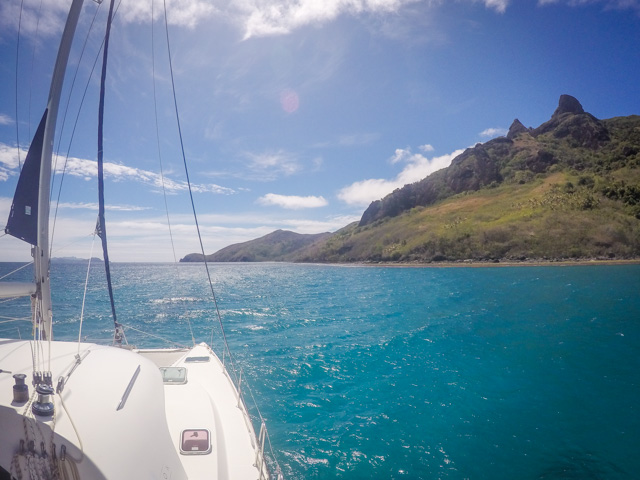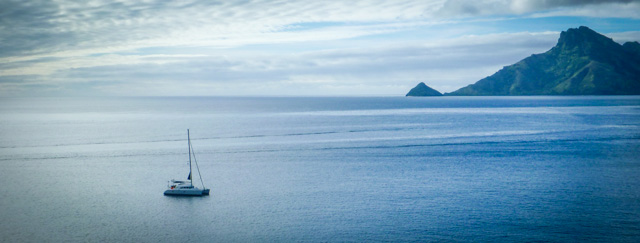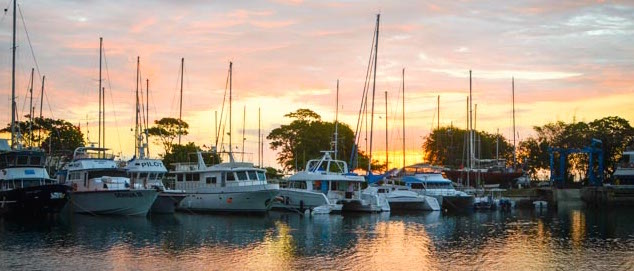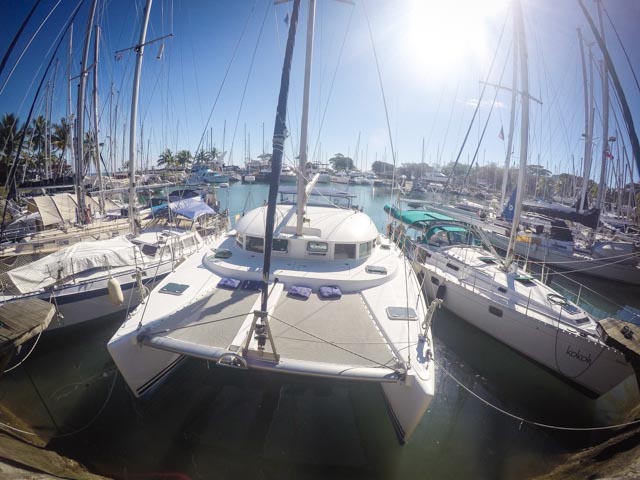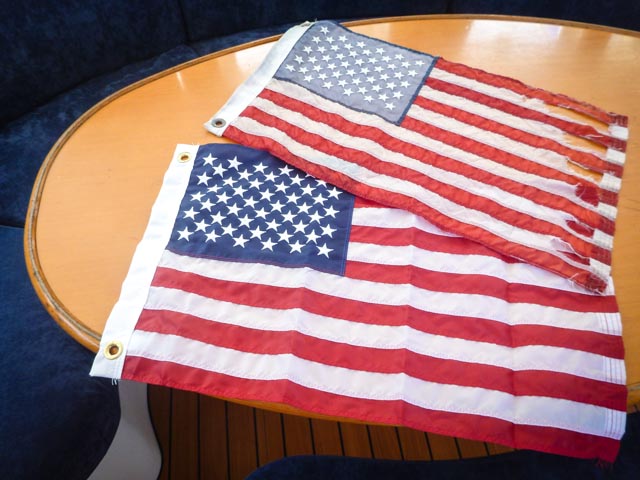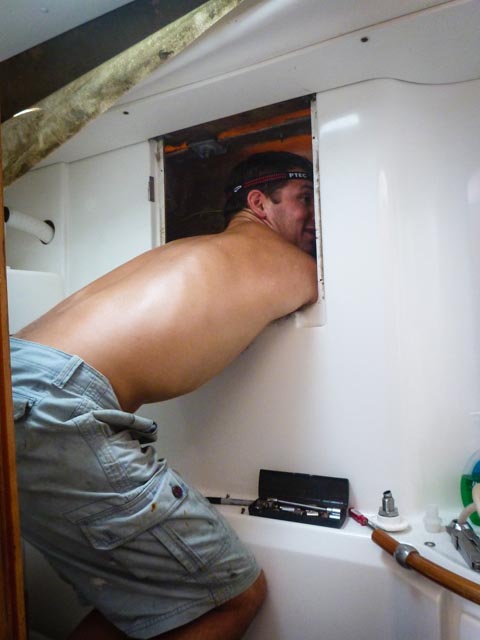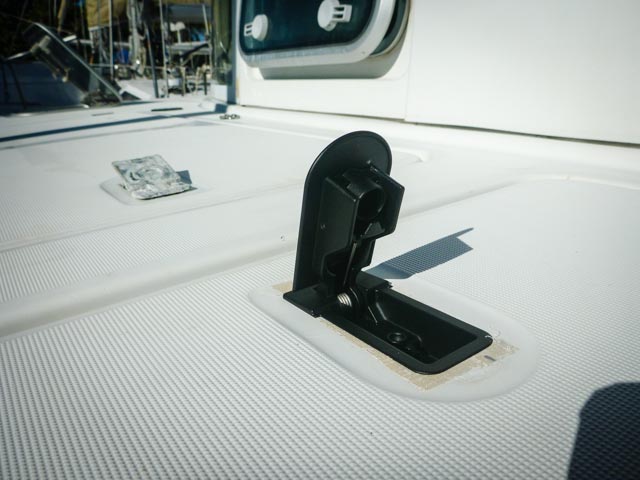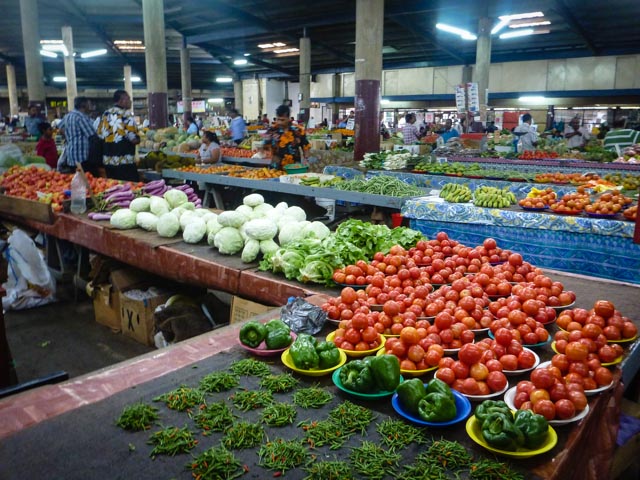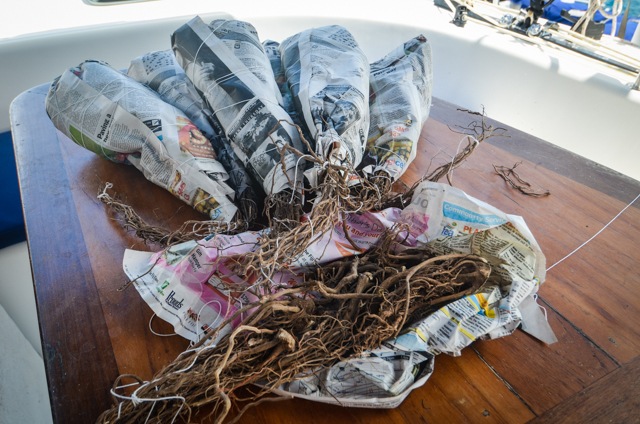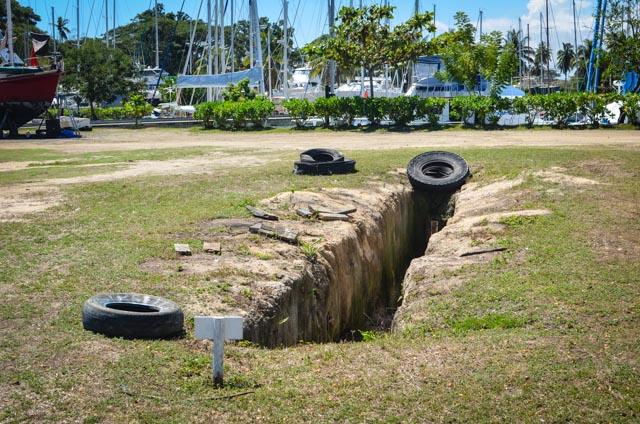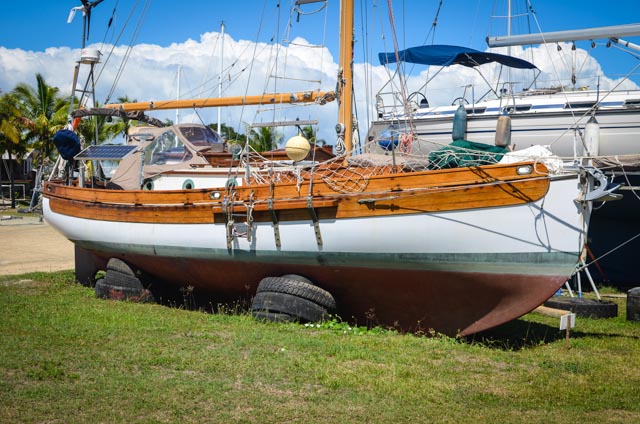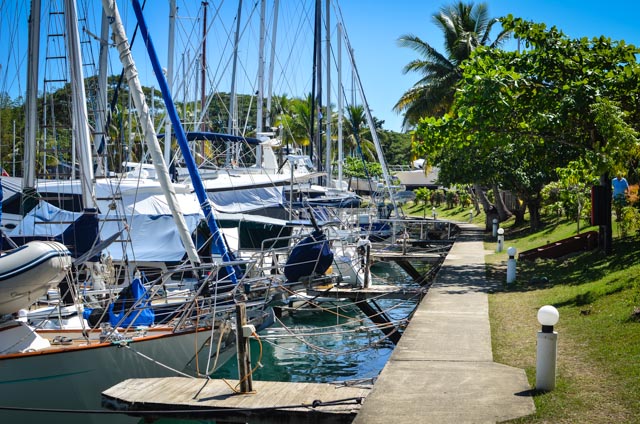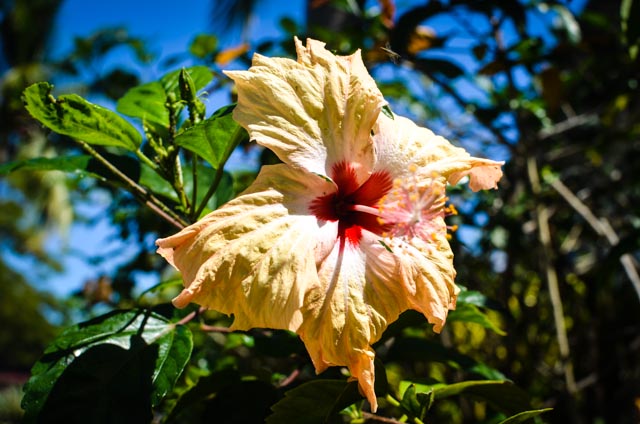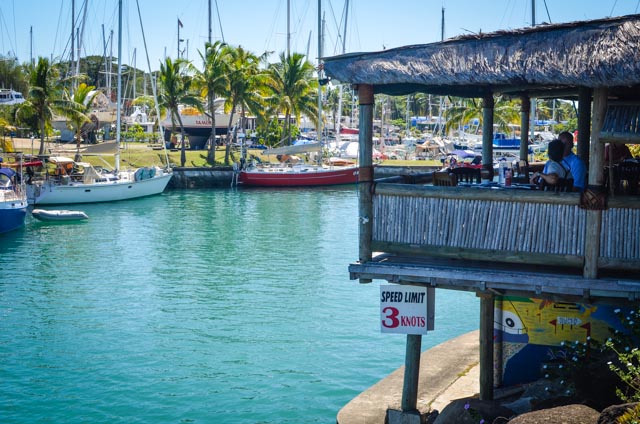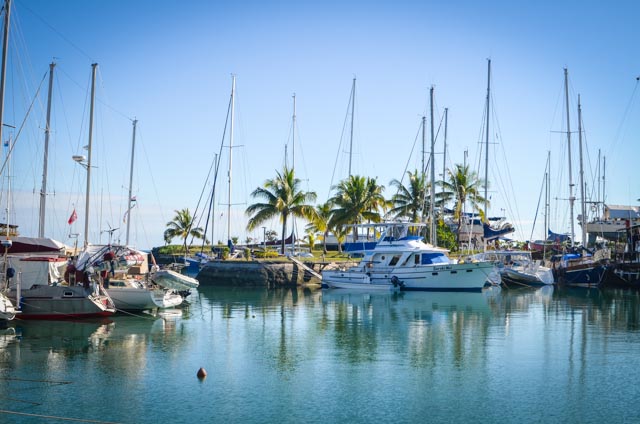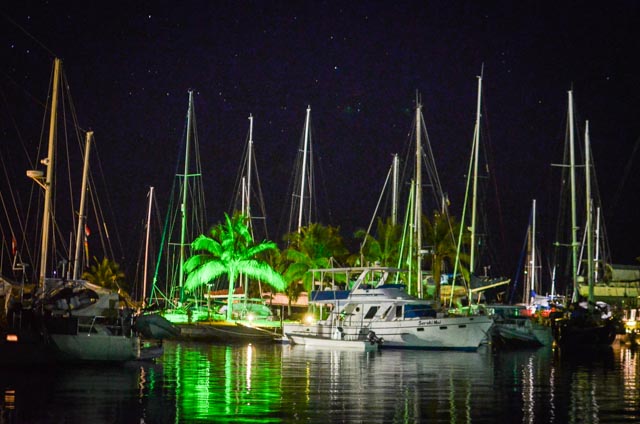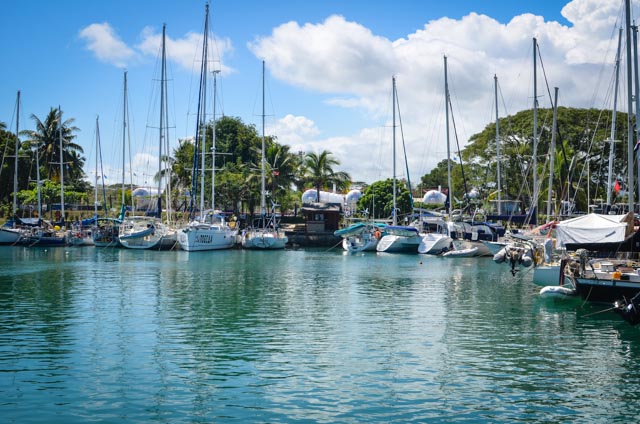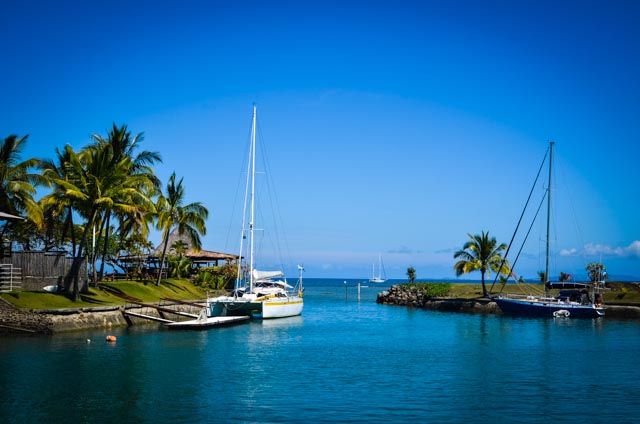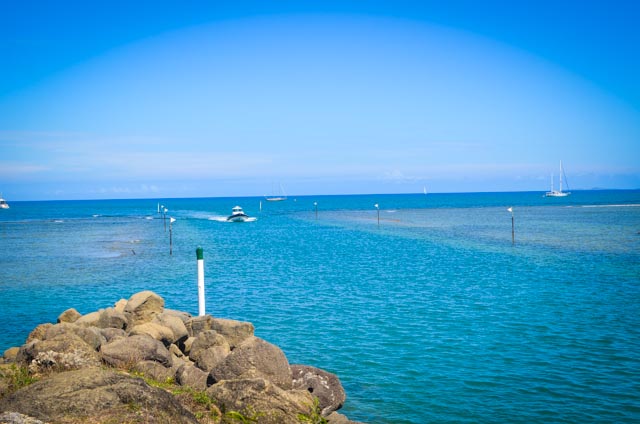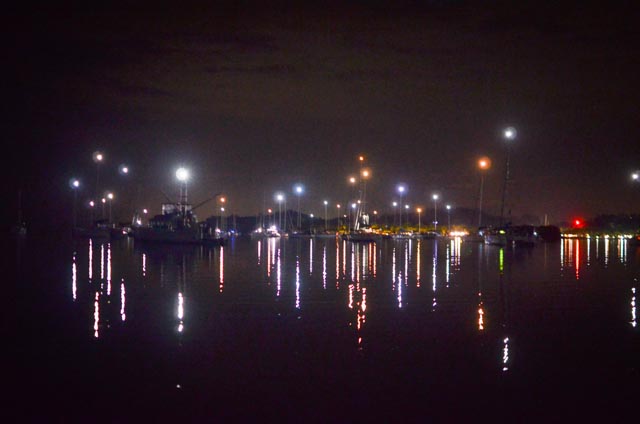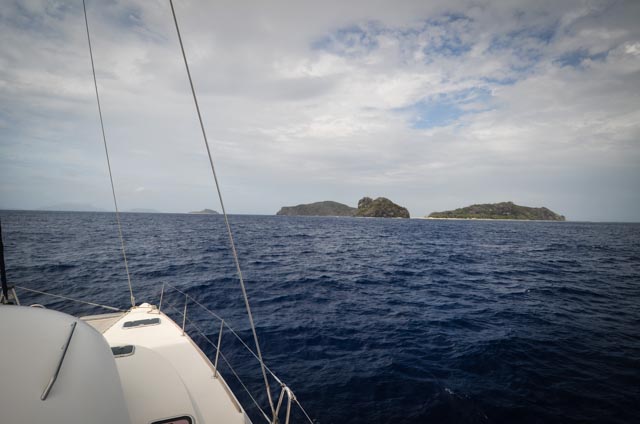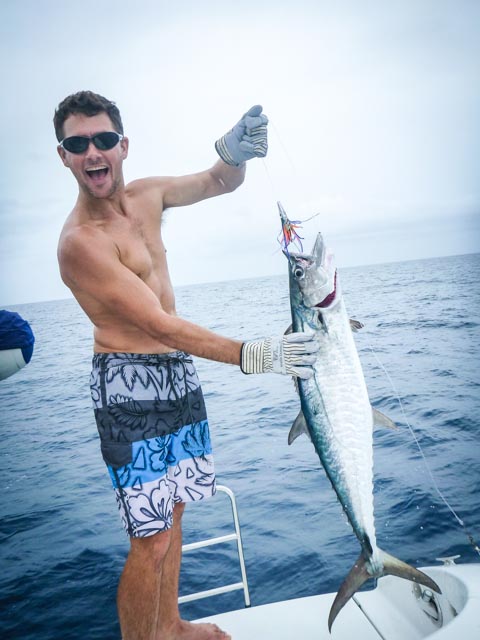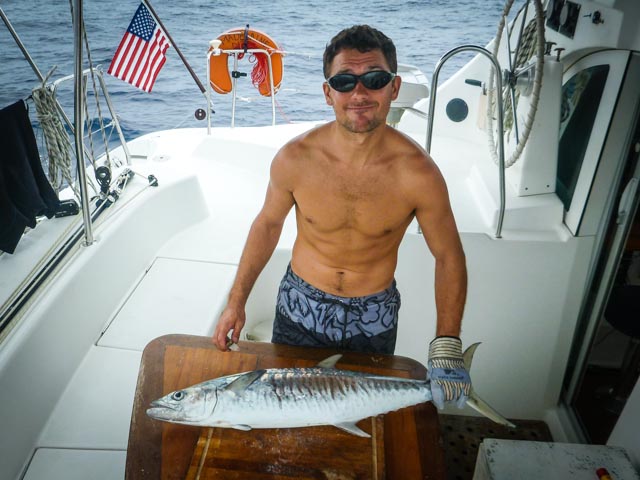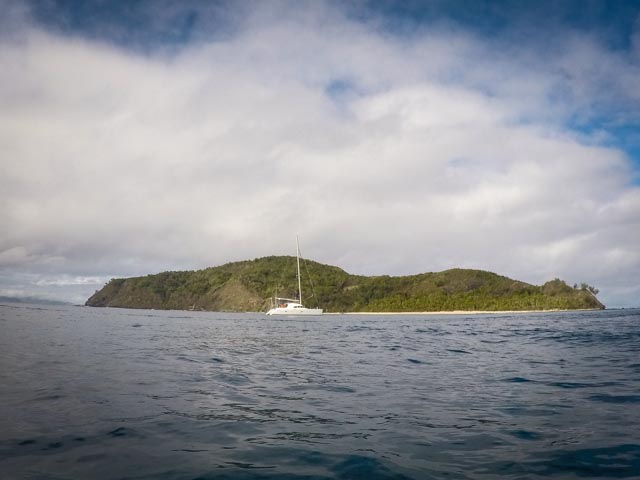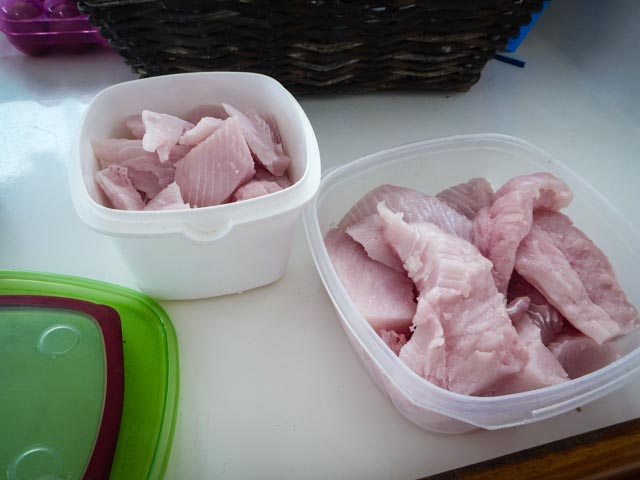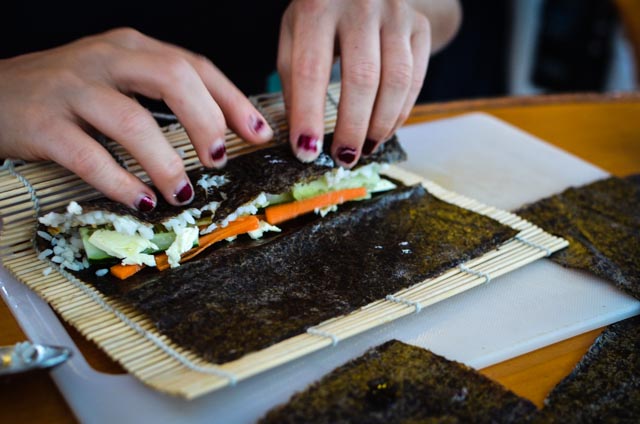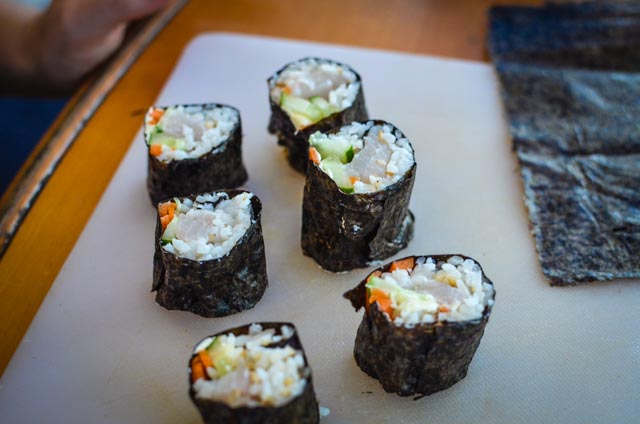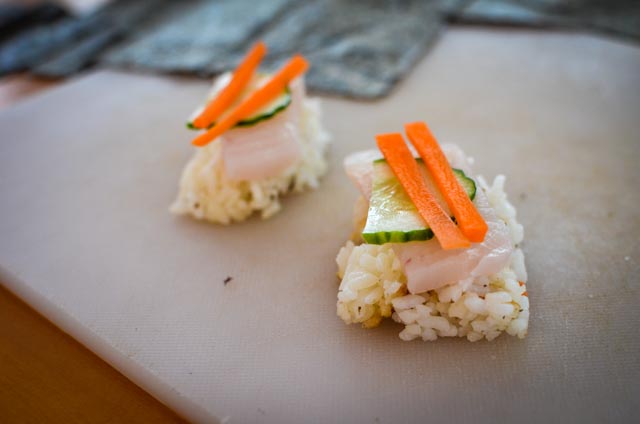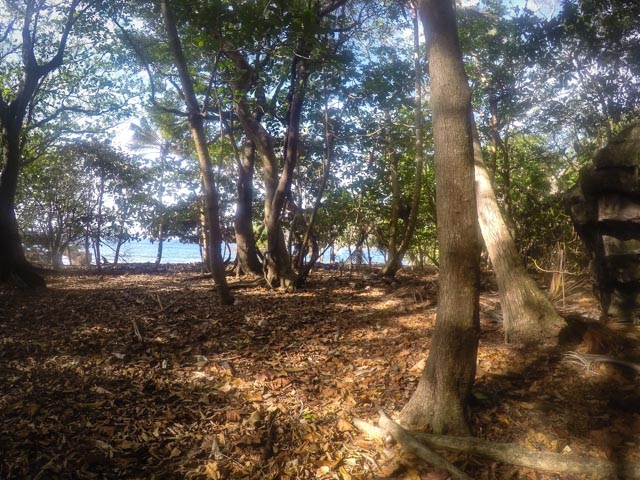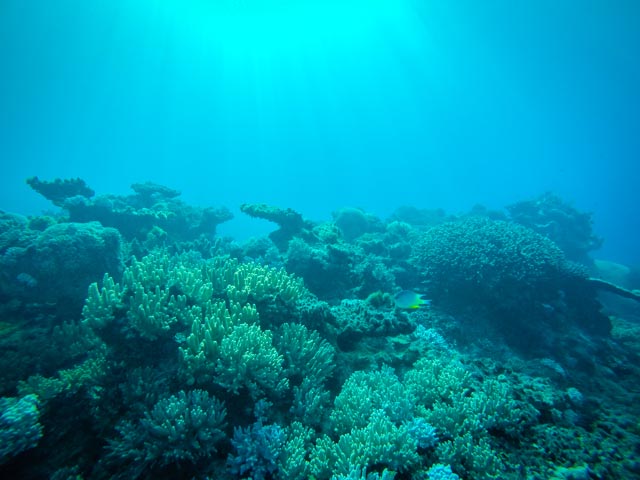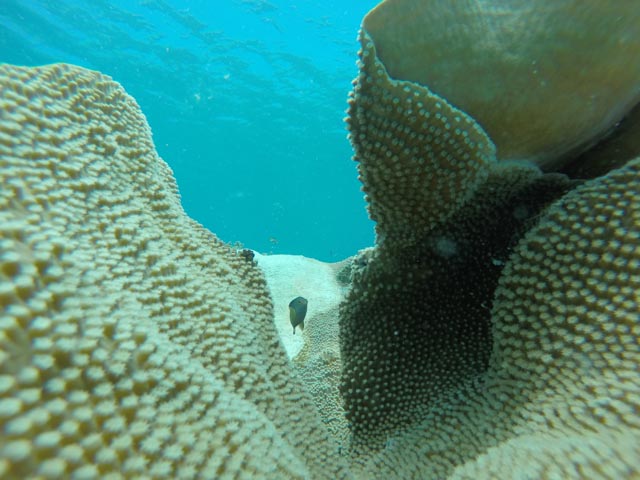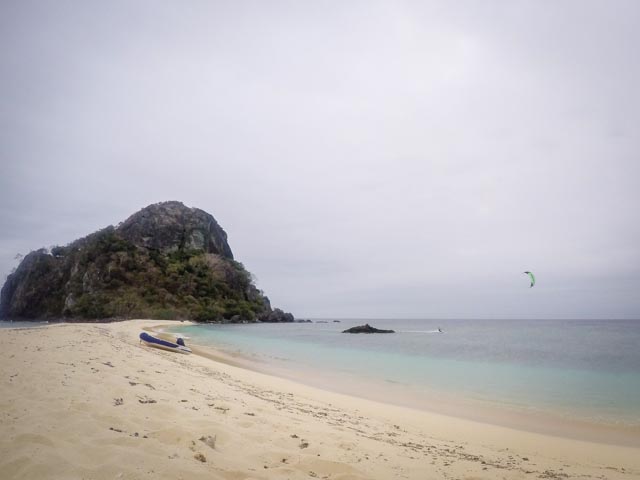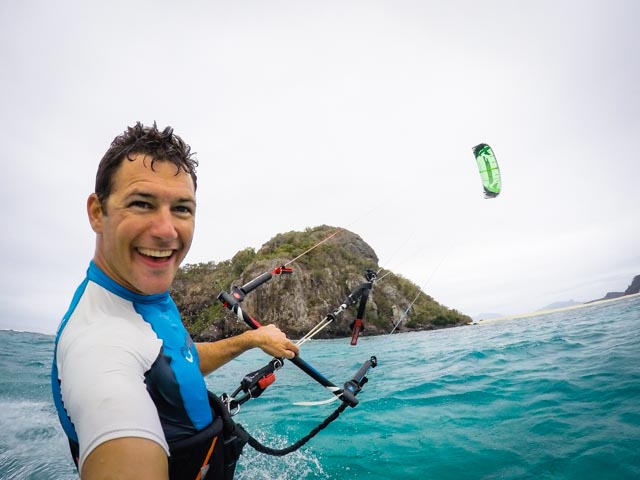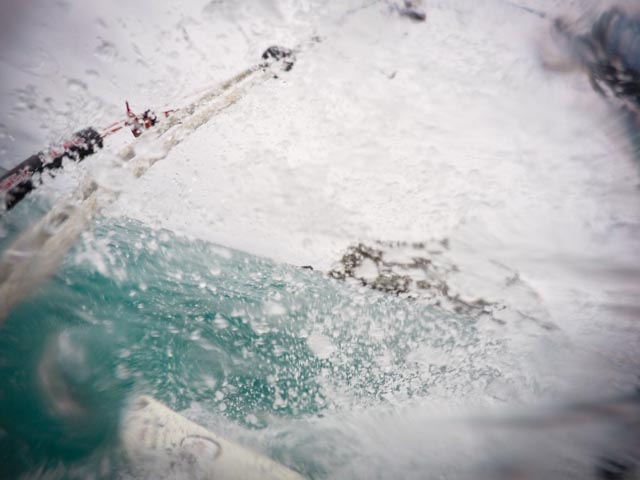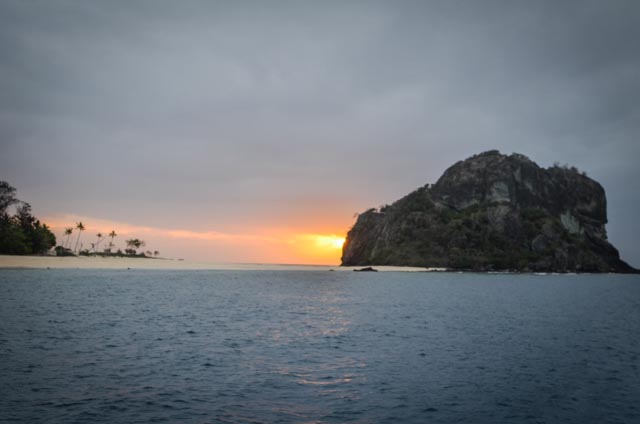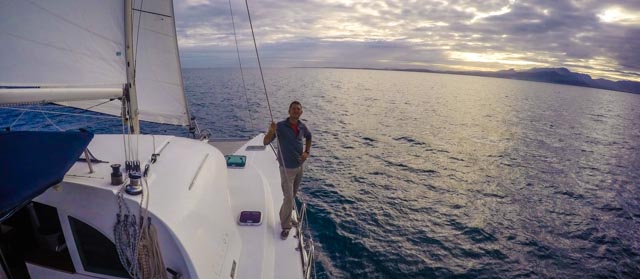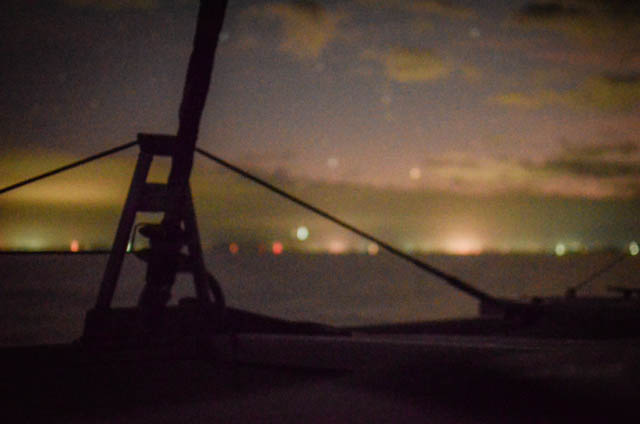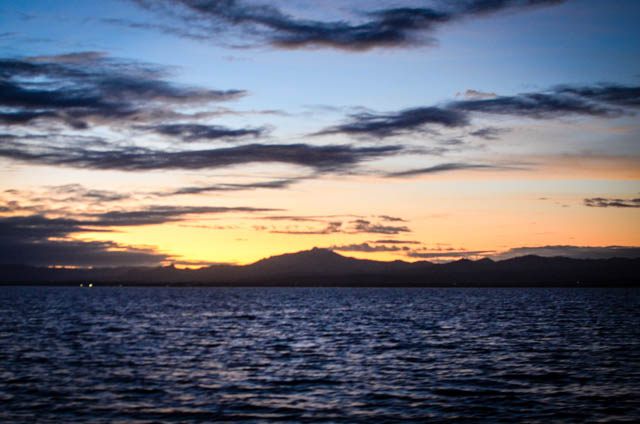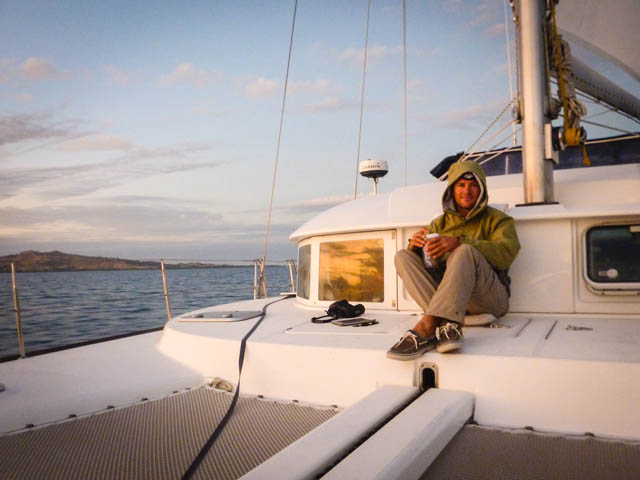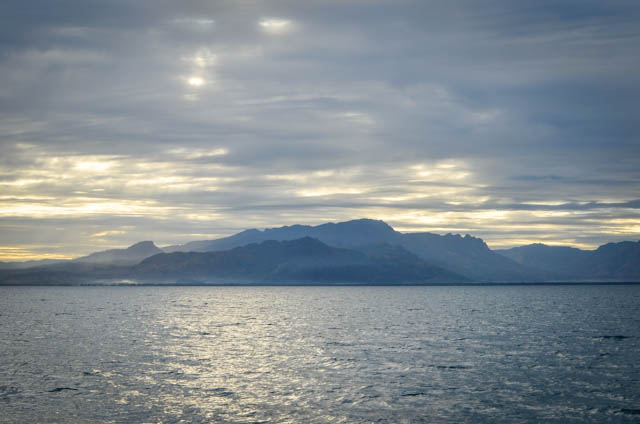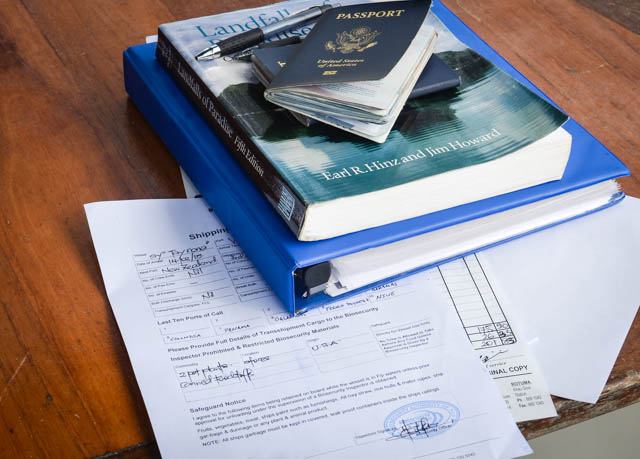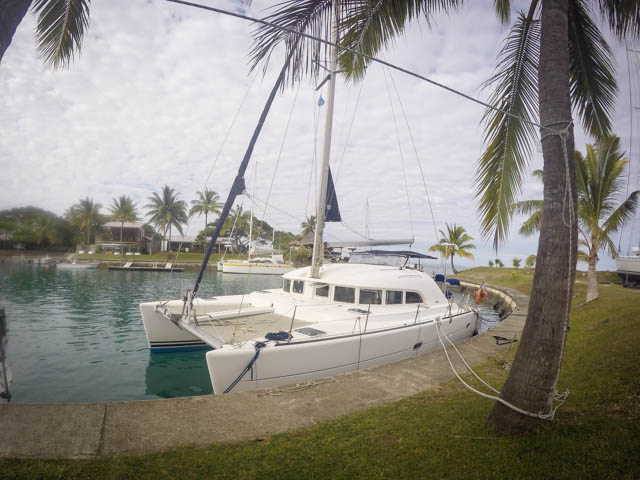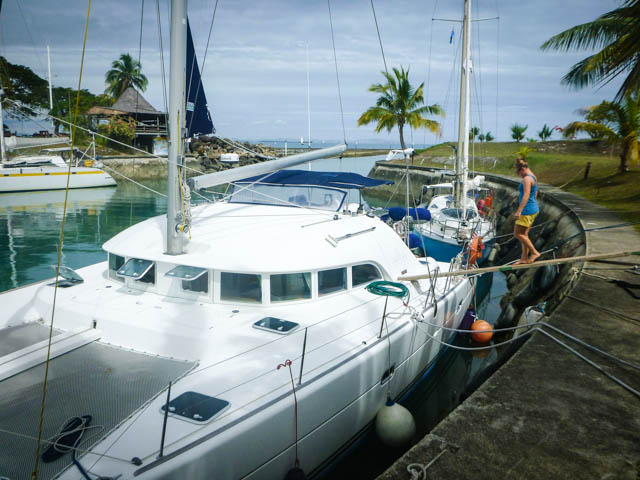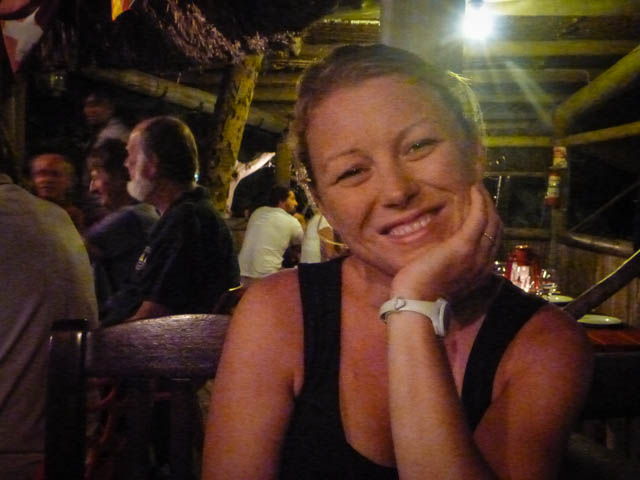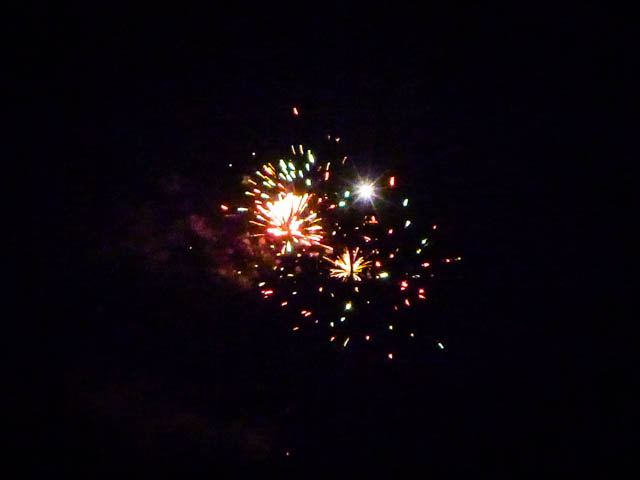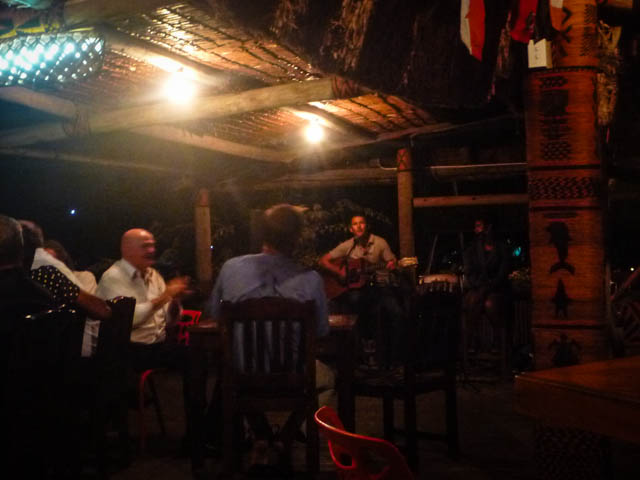Author: Pete
Location: Waya Island, Yasawa Group, Fiji
Sailing in comfortably short day hops has been a nice change of pace from the last… forever… of our trip. It’s been a different pace to get used to, taking our time along the way as we head north. When we’re asked which way we’re headed, I like to reply, “Up Yasawas!” Seems like it should that be insulting somehow.
From Navandra we motor-sailed north an hour to Kuata, the southern-most island of the Yasawa chain that runs up the west side of Fiji. Matanivanua Bay is uninhabited and offers little protection, but we anchored for the night in relatively calm conditions.
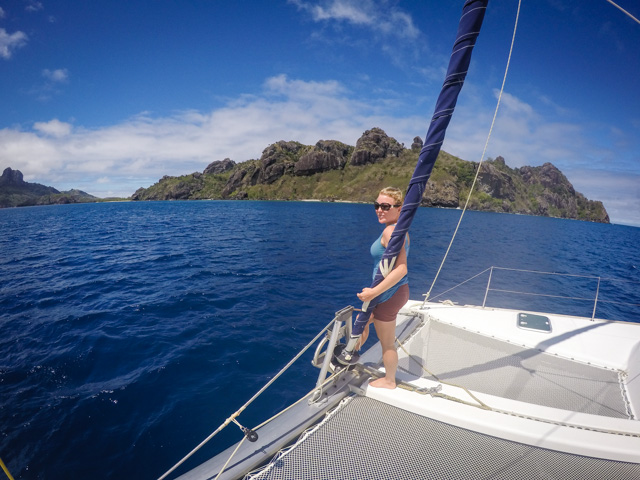
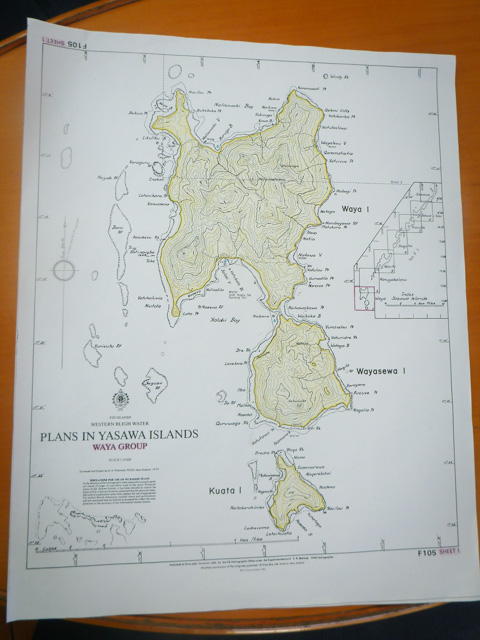
We’ve been seeing more and more of these Crown of Thorns starfish. They’re voracious predators that climb atop chunks of coral and exude their stomachs out to dissolve and digest it. If you’re searching for aliens, look no further. Some places have epidemics of them, which leave entire reefs dead and bleached out. With almost no predators to mitigate their damage, divers are encouraged to help ‘control’ their population. I do my part. Lobsters are a HUGE reef problem too, so I help out with them as well.
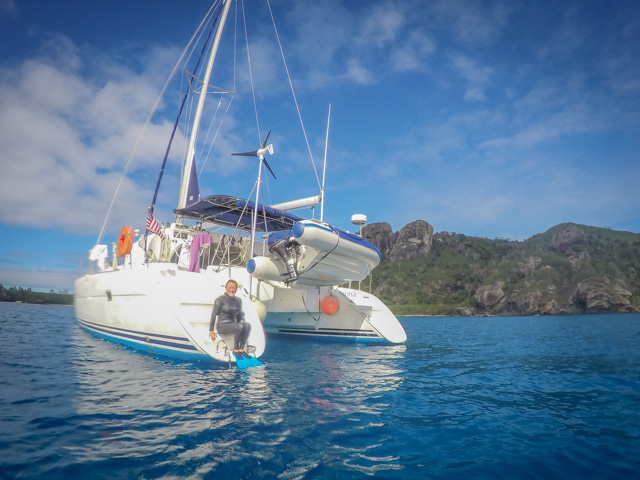
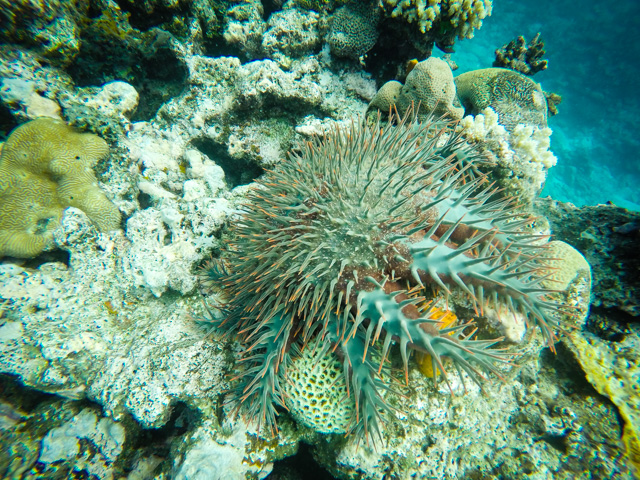
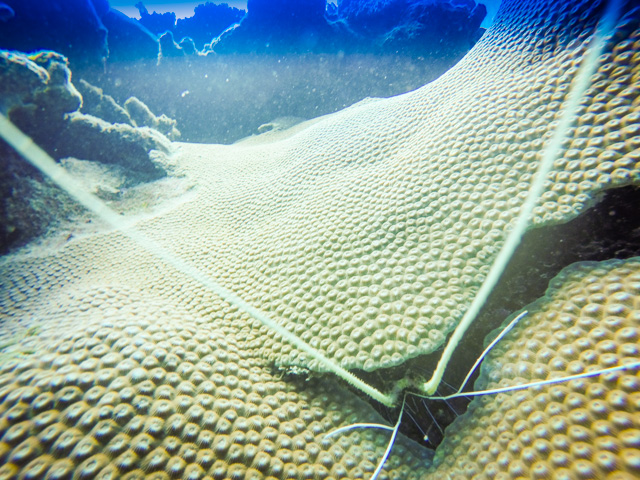
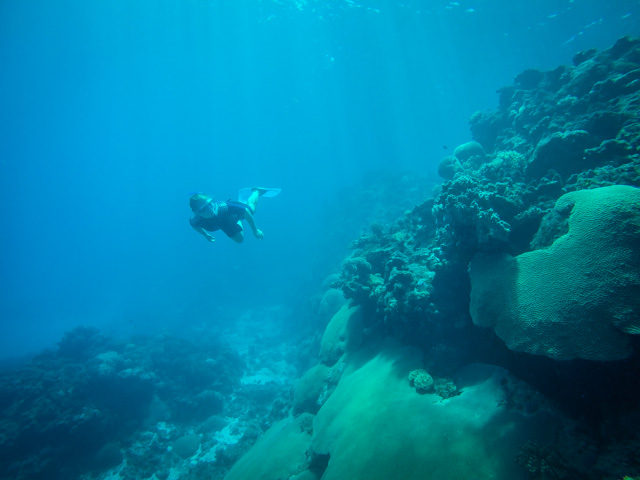
There’s nothing to speak of ashore, but the topography is fantastic. I spent an afternoon trying to gain the high ground of one of the rock outcroppings, bushwhacking with a machete through overgrown, pathless jungle. Ended up climbing up through caves with banyan tree roots oozing down the walls, using rock and vine to climb up through the spider webs. The scene was right out of Indiana Jones.
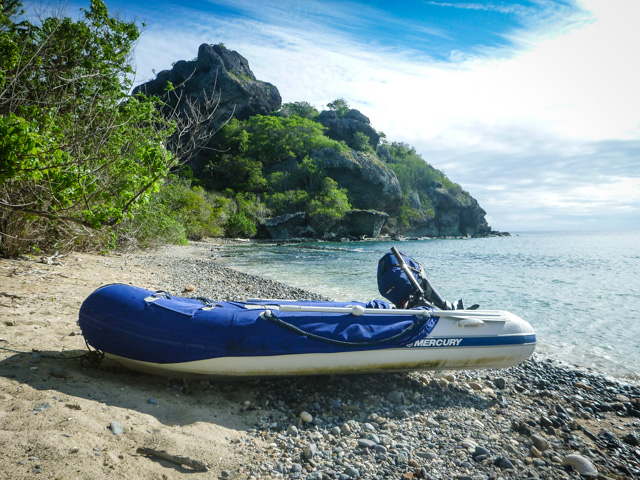
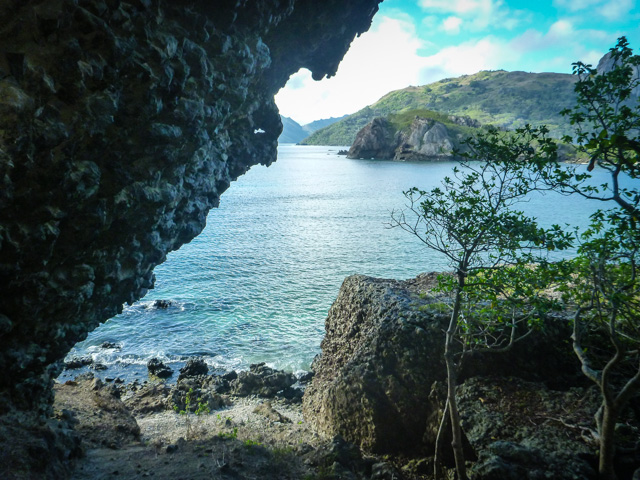
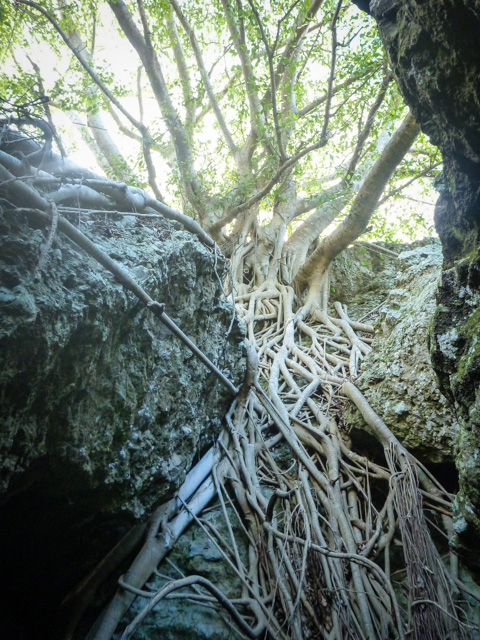
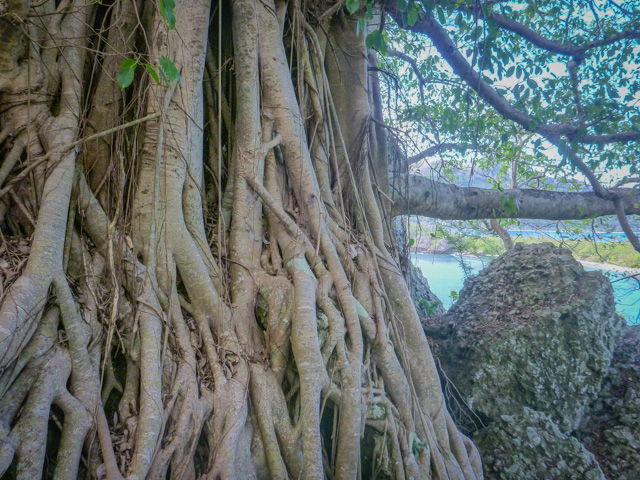
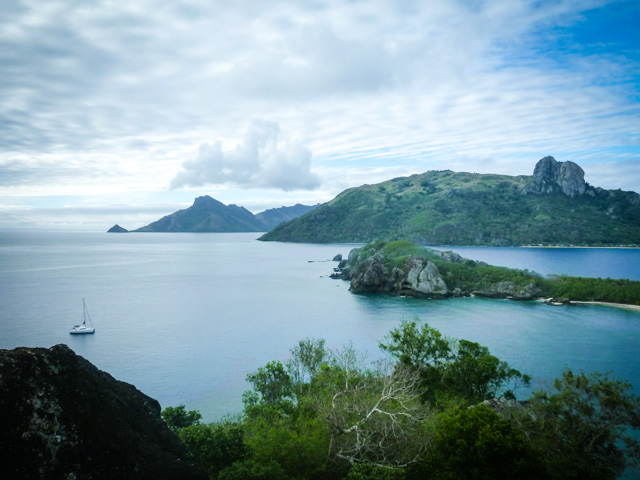
Pulling anchor the next day we aimed north, making the pleasantly short, three-mile trip to the south-facing Yalobi Bay on the island of Waya. The wind was supposed to be come strong from the east in the following days and the bay looked like it should provide good protection. Clouds hung much too low, like ceiling tiles in a 1970’s basement and misty rain gave a sheen of perspiration to our faces. Going ashore to pay our respects with sevusevu in the little village found a few clapboard shacks and a small school, but little else. We were invited to church the next day though, and we accepted. The wind snuck progressively south and gathered strength and soon the bay was collecting heavy rollers. You know how little kids can play with a toy truck, making it jump a ramp again and again and again? Tayrona felt like that to me as she pitched and surfed exuberantly through the night on her anchor. I was less enthusiastic about the unexpected wind shift and rolling anchorage. Miranda didn’t seem to notice.
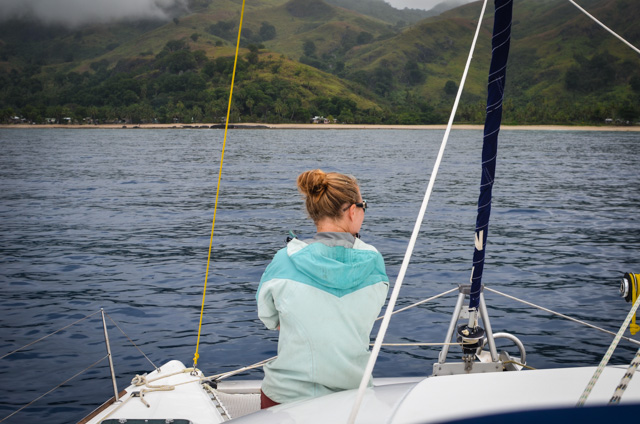
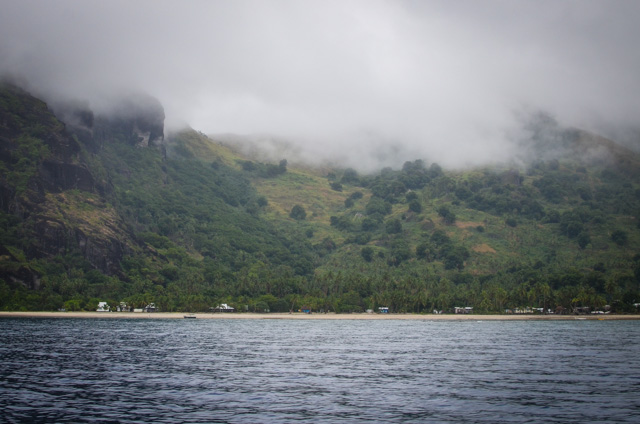
In the morning the off-forecast south wind and waves were worse and Tayrona was still animatedly at play. Still we donned our Sunday finest and casually hopped into the dinghy the same way one might hop on a loosed rodeo bull. We made it almost to shore before dinghy took a wave over the bow. What wasn’t soaked by the direct impact was caught by the spray flung by driving wind. I was ready to turn back, put on dry clothes, and have a private service presiding over my coffee cup aboard, but Miranda prodded me to bring us to shore anyway. And right she was; by the time we found our way to the church it was raining and the entire congregation was a little drippy.
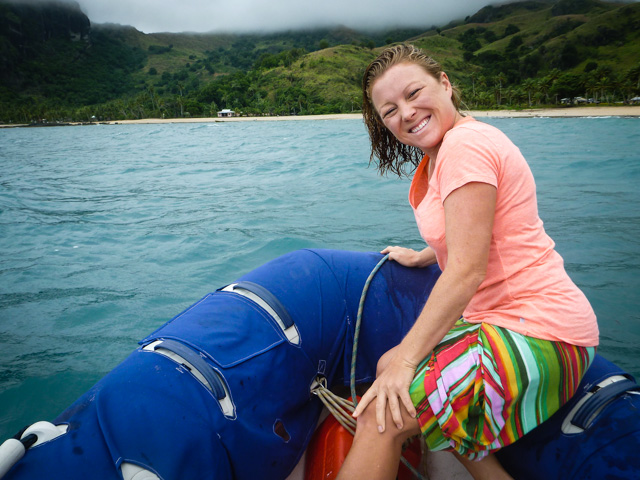
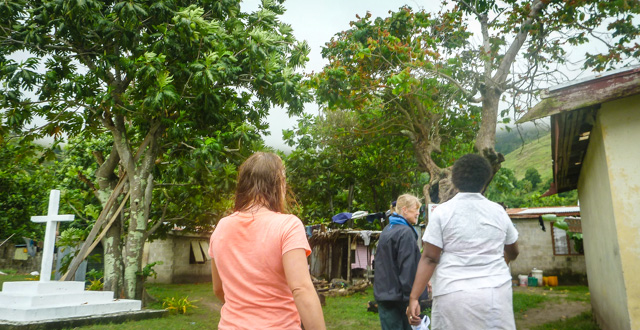
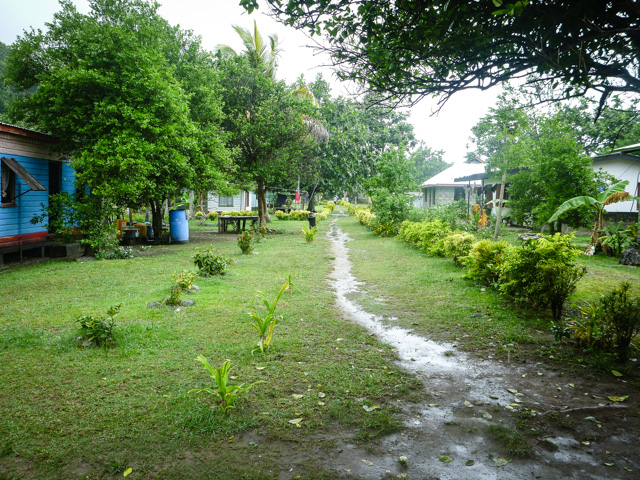
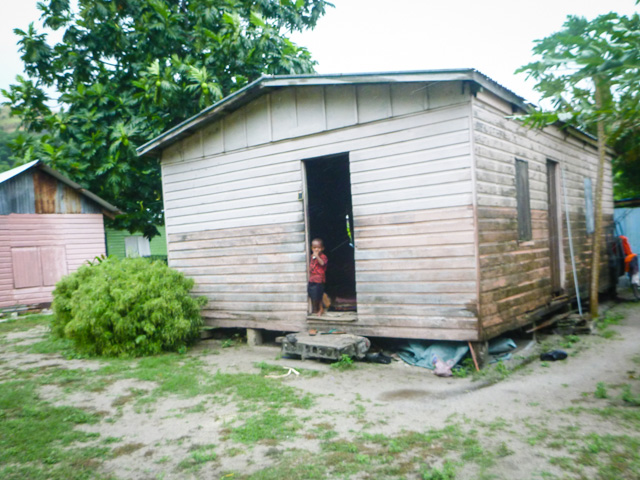
The plain interior of the church has the standard double doors at the back, but also has doors the entire way down the walls. During service, all the doors are open, so it’s a little like being in a big outdoor pavilion. Wind blows through and the occasional chicken sticks it’s bobbing head in. I can’t tell if they’re genuflecting reverently or just looking for corn. The town’s carved wooden drum outside was hammered rhythmically as a call to service, ringing through the palms. The villagers came in and took their seats, all dressed in sharp, if a little damp, Sunday finery. The austerity of the bare walls, crookedly hung icons, and cheap, electric-green tablecloths contrasted interestingly with the gorgeous fresh flower bouquets placed around the alter as people walked in. Little boys scooted under and over the pews, women tittered, the old men grinned welcomingly to us with toothy smiles. Being guests, we were put in the front pew. It’s a little awkward up there, but we got a great view of the proceedings. Despite the heat and humidity the pastor wore a crisp white shirt and tie under a long wool peacoat. He didn’t perspire at all during the service, partially I think, because he was wearing a traditional skirt and no shoes. In fact, everyone was barefoot. A representative from the community welcomed us and apologized that the service would be conducted in Fijian. The tiny church resonated with the voices of the congregation when they sang. Outside it began to pour, the deluge adding it’s own harmony to the chorale. After the service we talked with some of the locals then braved the surf back to the boat.
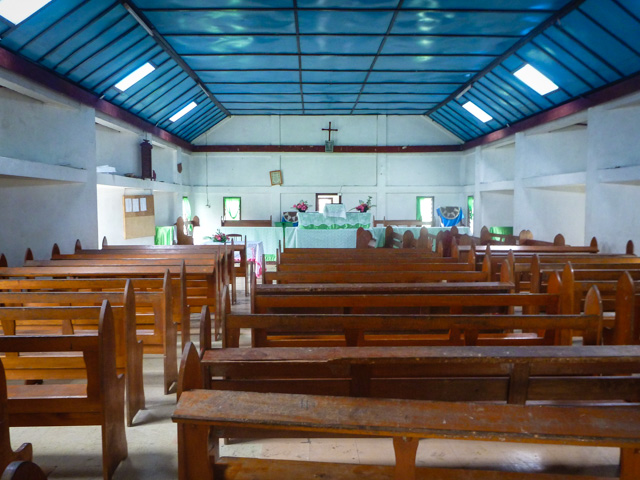
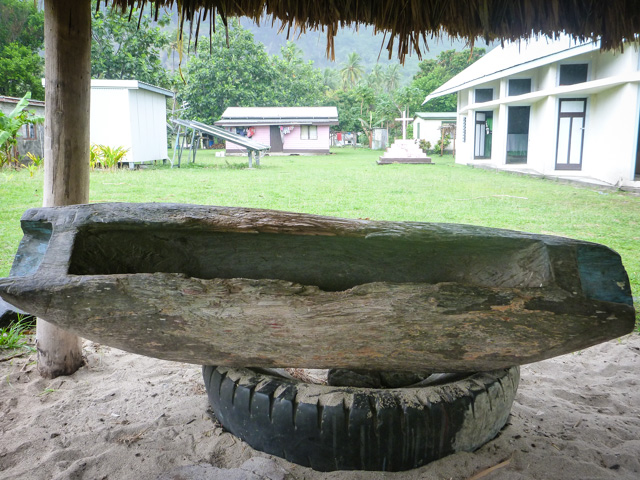
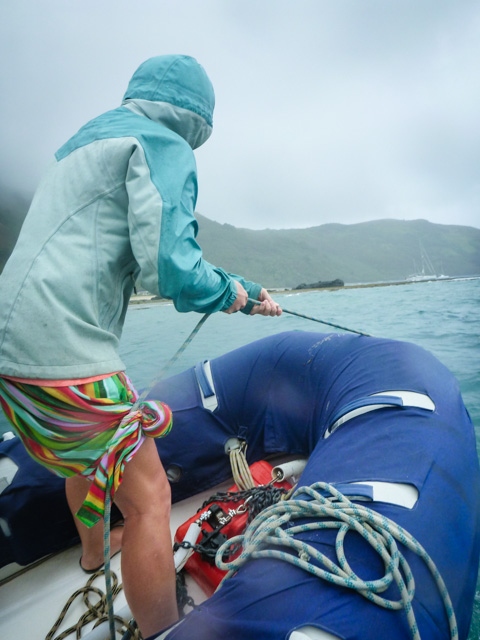
Tayrona was pitching fervently when we got back to her, transoms digging deep into the water, then scooping it up into the air. It’s a bit dangerous to board in rough conditions, but soon we were on deck, the tender was hoisted, and we got out of dodge. We motored south with wind and waves on our nose until we rounded the southwest point where we turned north and sailed downwind. Charts of Fijian waters are as scant and vague as the shoals are plentiful. We took turns keeping watch in the elements and hiding in the cabin. Some reefs were easy to spot in the form of boiling water. We did nose into the northern bay of Naluaki and hid from the wind in the lee of the land with our buddies from Tallulah Ruby.
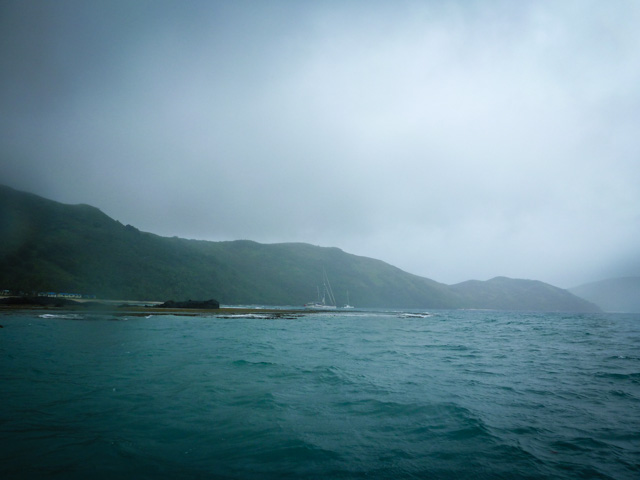


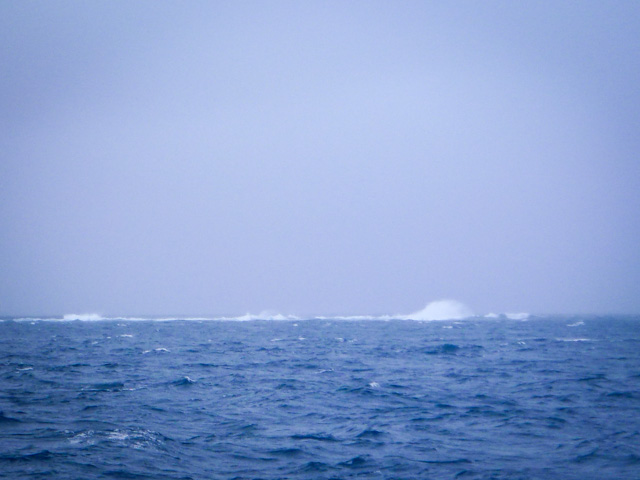

We woke the next day to blue skies and light winds. They had, however swung around and were now coming from the north into the open bay! You just can’t win sometimes! The dramatic scenery of tall rock teeth sticking out of the green gums of the island made up for the previous day’s brooding. We went in to shore to pay our respects with sevusevu and found a couple young guys, Max and Jonotani, to guide us up into the hills the next day for a trek. Despite being barefoot, they outpaced us handily in the uphill hike. The scenery was worth the humbling in the end though, and Max scaled a palm to knocked down a couple coconuts for us! We paid our guides and later I gave the younger guy, Jon, an extra mask and snorkel since he lived mere feet from a gorgeous reef and couldn’t go see it.
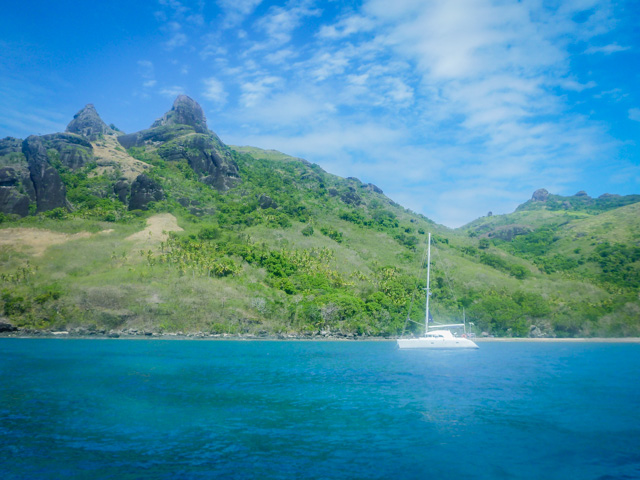
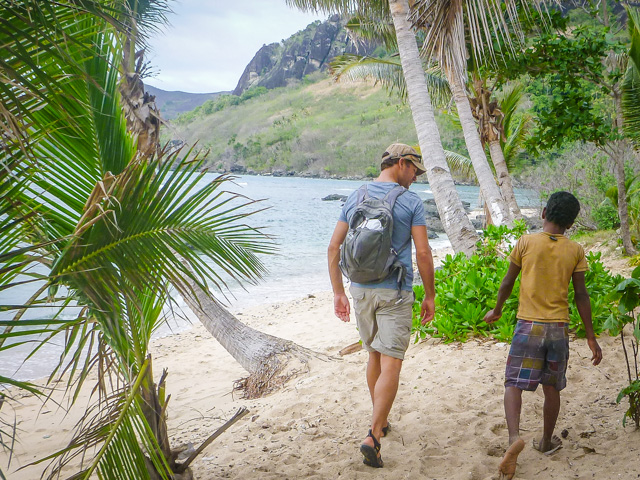
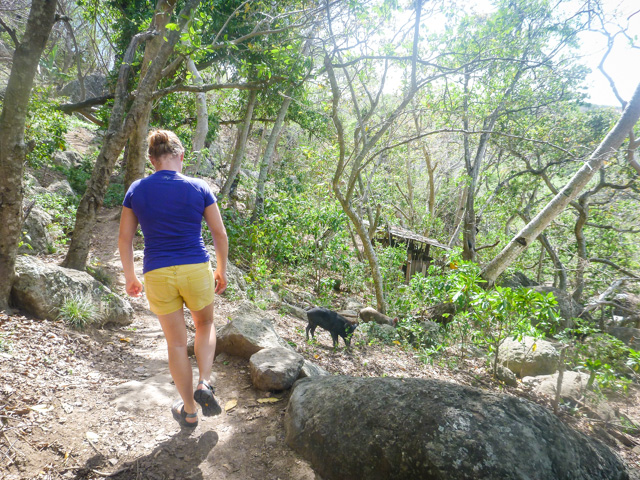
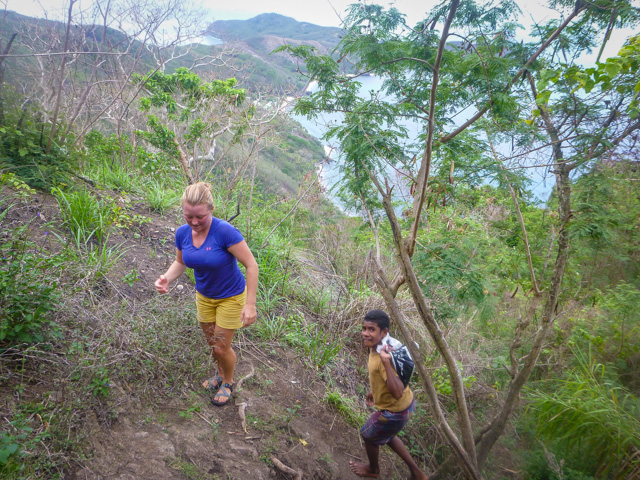
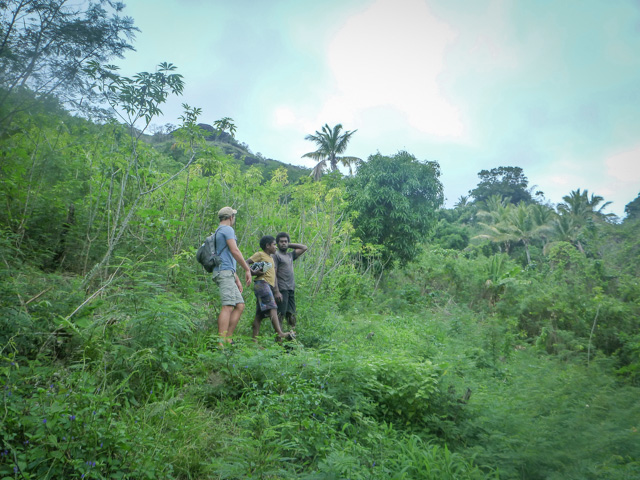
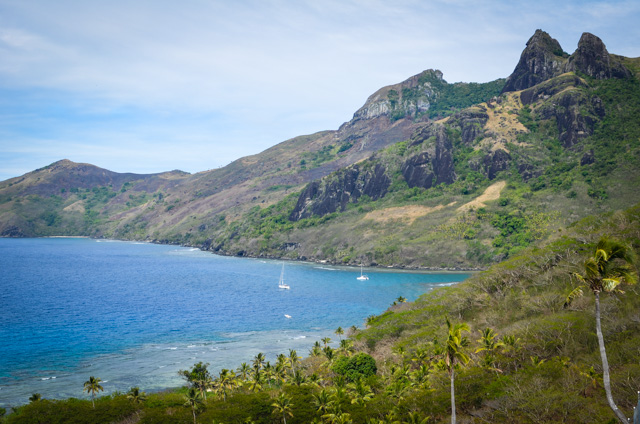
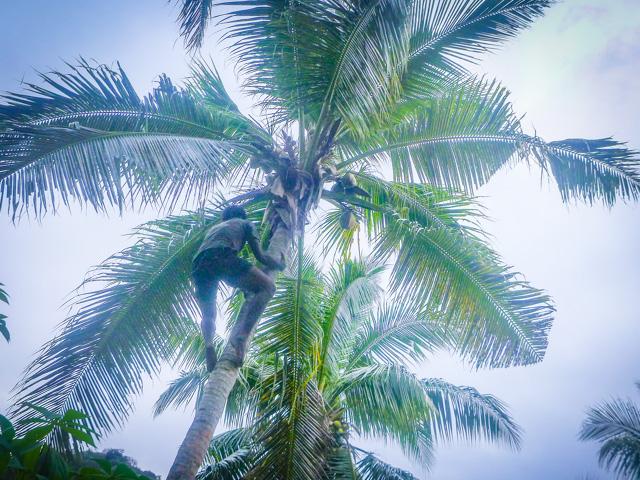
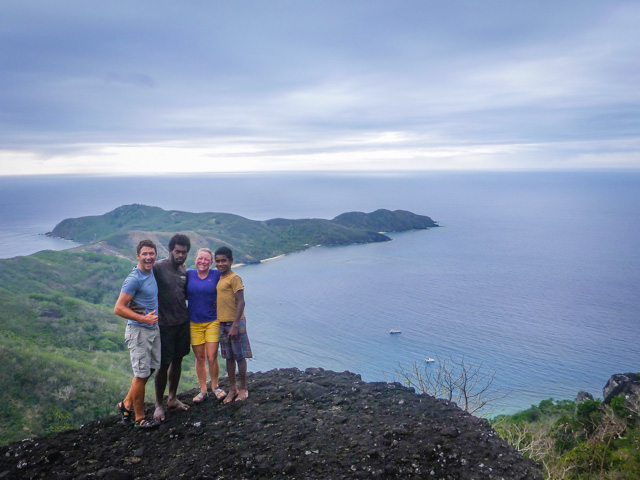
Heading ‘Up Yasawas’ in the next couple of days to find some manta rays!
